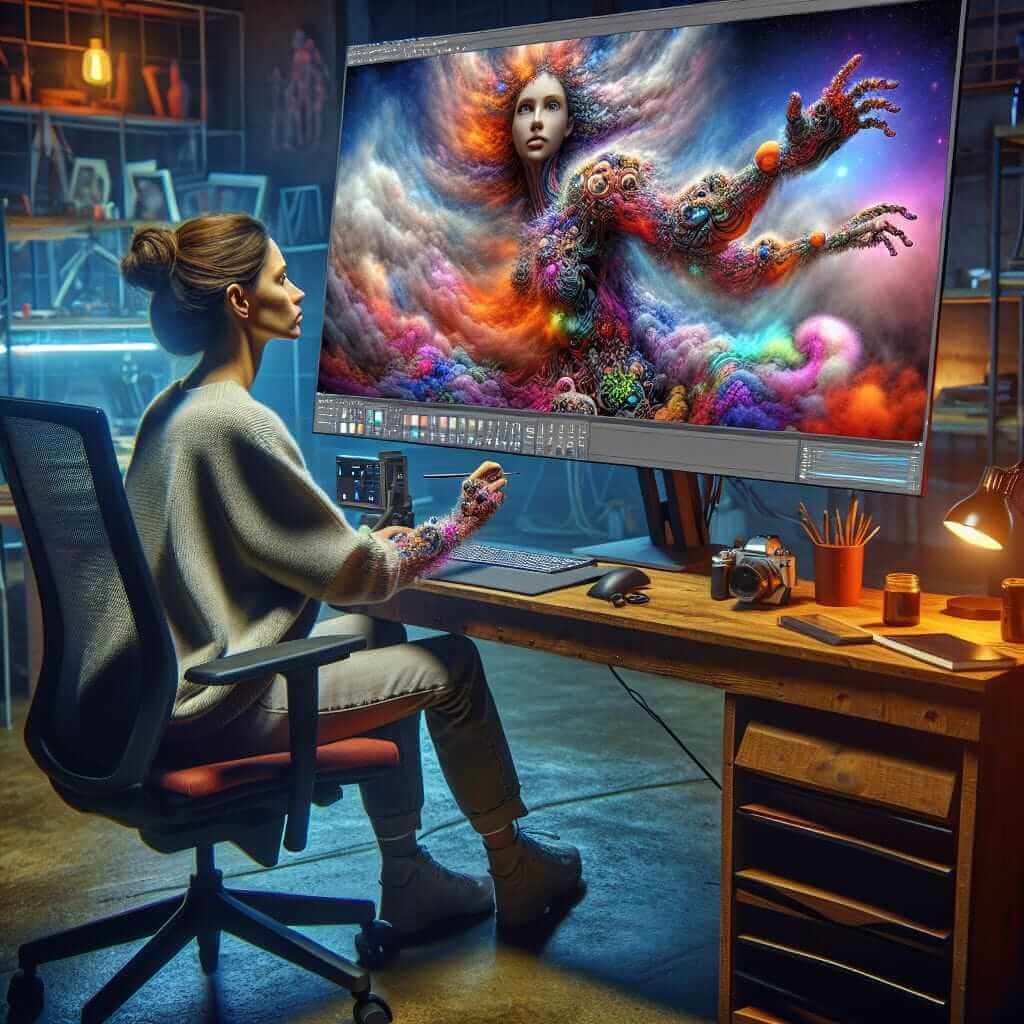Artificial intelligence (AI) has been increasingly influential in various sectors, with the creative industries being no exception. This impact, with both positive and negative ramifications, offers a rich topic for discussion and analysis in the context of IELTS Writing Task 2. In this segment, we will create sample essay prompts based on the keyword “The influence of artificial intelligence on creative industries”, analyze one of the prompts, and provide a complete sample essay.
Sample Essay Prompts
- “Some people believe that artificial intelligence will completely take over creative industries such as film, music, and writing. To what extent do you agree or disagree?”
- “In what ways has artificial intelligence revolutionized the creative industries? Discuss the positive and negative impacts.”
- “Artificial intelligence is said to be a threat to human creativity. Do you think AI will enhance or hinder creative industries? Give reasons for your answer and include any relevant examples from your own knowledge or experience.”
Selected Prompt for Analysis
We will choose the second prompt for our detailed analysis and essay writing: “In what ways has artificial intelligence revolutionized the creative industries? Discuss the positive and negative impacts.”
Analyzing the Prompt
The prompt asks us to discuss the revolution brought by AI in the creative industries and to weigh both the positive and negative impacts. We need to approach this essay with balanced arguments, providing real-world examples and considering various aspects of creative industries such as art, music, film, and writing.
Sample Essay
Artificial intelligence has made significant strides across various sectors, none more so than in the creative industries. From assisting in the creation of digital art to automating music composition, AI is reshaping how creativity is produced and consumed. However, this revolution comes with both commendable advancements and concerning drawbacks.
On the positive side, AI has democratized creativity. Tools like AI-powered design software and music composition applications have made it possible for individuals with little to no formal training to create professional-quality work. For instance, platforms like Canva use AI to suggest design templates, which can be particularly beneficial for small business owners or social media influencers who need eye-catching graphics. Similarly, AI algorithms can generate music that caters to specific moods or styles, such as Amper Music, which allows anyone to compose custom music tracks quickly.
In addition, AI enhances productivity and efficiency in the creative processes. Filmmakers, for example, utilize AI for special effects, editing, and even scriptwriting. The Marvel franchise uses AI to create complex CGI landscapes and characters, significantly reducing production time and costs. Furthermore, writers are employing AI tools for grammar checking, plagiarism detection, and even idea generation, as seen with services like Grammarly and Sudowrite.

Despite these advantages, AI’s influence on creative industries is not without its downsides. One major concern is the potential loss of jobs. As AI continues to take on tasks traditionally performed by humans, the demand for human artists, musicians, and writers may diminish. For example, AI-generated music may reduce the need for composers, and AI-driven design tools could lessen the need for graphic designers.
Another significant issue is the authenticity and originality of AI-generated content. While AI can mimic styles and patterns, it lacks the emotional depth and personal experiences that often define truly original and impactful art. This raises questions about the value and uniqueness of such creations. Critics argue that human creativity, rooted in individual experience and emotion, cannot be fully replicated by machines.
In conclusion, artificial intelligence has undoubtedly revolutionized the creative industries, bringing both substantial benefits and notable challenges. While it has made creativity more accessible and processes more efficient, it also poses threats to jobs and raises questions about the originality of AI-generated works. Balancing these pros and cons will be crucial as we continue to integrate AI into our creative processes.
(Word Count: 410)
Key Points to Remember When Writing the Essay
- Balanced Argument: Always aim to present a balanced view, weighing both positive and negative points.
- Use of Examples: Providing relevant and specific examples can strengthen your arguments.
- Clear Structure: Ensure your essay has a clear introduction, body paragraphs with topic sentences, and a concise conclusion.
Vocabulary and Grammar Focus
Vocabulary
- Democratize (v) /dɪˈmɒkrəˌtaɪz/: To make something accessible to everyone.
- Algorithm (n) /ˈælɡərɪðəm/: A process or set of rules to be followed in calculations or other problem-solving operations.
- Authenticity (n) /ɔːˌθenˈtɪsɪti/: The quality of being genuine or original.
- Productivity (n) /ˌprɒdʌkˈtɪvɪti/: The effectiveness of productive effort.
- Plagiarism (n) /ˈpleɪdʒərɪzəm/: The practice of taking someone else’s work or ideas and passing them off as one’s own.
Grammar Structure
- Complex Sentences: Use complex sentences to show connections between ideas. E.g., “While AI can mimic styles and patterns, it lacks the emotional depth and personal experiences that often define truly original and impactful art.”
- Topic Sentences: Start paragraphs with clear topic sentences that outline the main idea. E.g., “On the positive side, AI has democratized creativity.”
- Transitional Phrases: Use transitional phrases to ensure smooth flow of ideas. E.g., “In addition, AI enhances productivity and efficiency in the creative processes.”
Conclusion
AI’s impact on creative industries is a multifaceted topic, making it excellent for IELTS Writing Task 2. Practice with various prompts, ensure balanced arguments, and utilize specific examples. Remember to stay updated with AI developments in creative fields to enrich your essays. Other related topics may include the role of AI in future job markets or the impact of technological innovation on job creation, as discussed extensively in other articles on AI and job security and technological innovation.